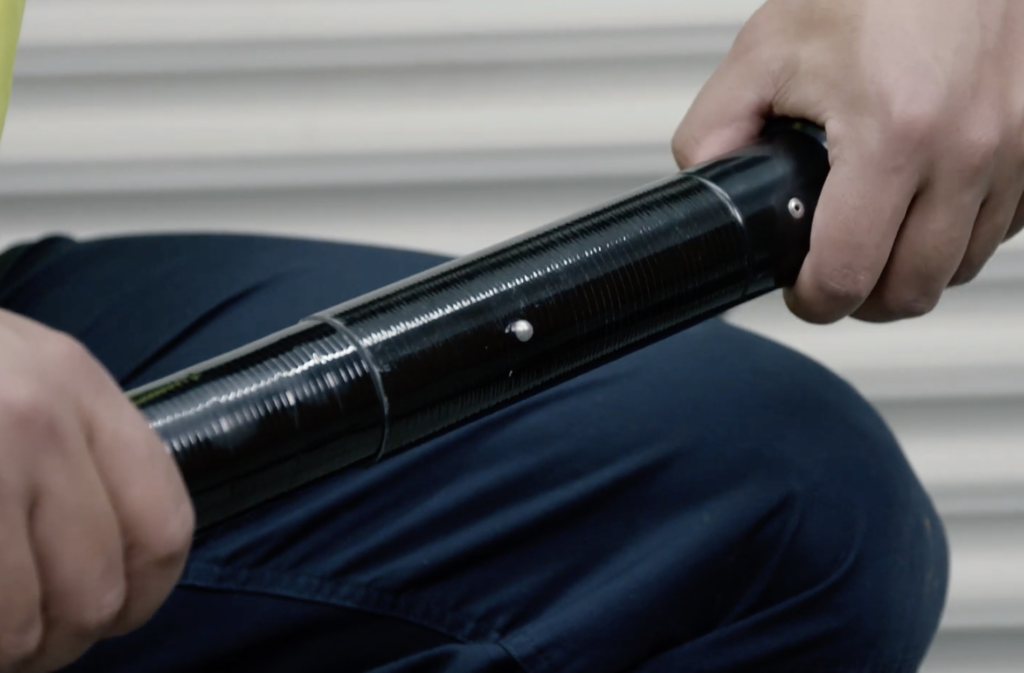Atex & SpaceVac’s Safety Locking Mechanism

The importance of a method to secure the poles and accessories together and prevent separation is paramount for more reasons than you might think! SpaceVac Technical Manager Andy Collar explains why…
As well as the danger of injury from falling objects, the inconvenience of having parts of the system literally ‘falling apart’ is going to cause you delays and lead you to possibly just ‘give up’. Then you are left with an expensive but useless tool, when you should be revelling in the benefits that this innovative system should bring with it. Not just the financial benefits but perhaps more importantly, the satisfaction of a job well done, quickly and easily with minimal disruption to the areas where normally would be forced to shut down for hours or days to enable access by Mobile Elevating Work Platforms (M.E.W.Ps for short).
So why else would you need to guarantee that your lovely new high reach cleaning equipment will not come apart during use? Well, if you happen to be using the very specialised ATEX kit in a Zoned, explosive atmosphere then it becomes a lot more of a serious problem. So much in fact that there is a clause in the Atex directive 2014.34.EU, that notes the importance that this cannot happen, excerpt below:
ANNEX II – ESSENTIAL HEALTH AND SAFETY REQUIREMENTS RELATING TO THE DESIGN AND CONSTRUCTION OF EQUIPMENT AND PROTECTIVE SYSTEMS INTENDED FOR USE IN POTENTIALLY EXPLOSIVE ATMOSPHERES
2.1.1.3.
Equipment must be so designed that the opening of equipment parts which might be sources of ignition is possible only under non-active or intrinsically safe conditions. Where it is not possible to render equipment non- active, the manufacturer must affix a warning label to the opening part of the equipment.
If necessary, equipment must be fitted with appropriate additional interlocking systems
So effectively, if your Atex kit does not securely interlock, as the SpaceVac equipment does by utilising the locking button, then although you may take it into a Zoned area, you cannot use it! Leaving you, again, with a very expensive but useless pile of equipment.
So how does separation cause an ignition source? Well, due to the friction of the materials that are being removed by the air travelling through the vacuum system (rubbing against the poles and hose walls etc.), dangerously high levels of static electricity can build up on the pole system. This of course would normally be taken away safely to earth via the conductive components and through the specialist vacuum cleaner earth connection. But, if separation were to occur, on the now isolated part of the system, not only is a there a dust/air mixture allowed to escape, (which offers two out of the three things required for a fire!) but also the static has lost this direct route to earth and needs to find the easiest path to ground. This is when there is a chance that the static electricity can jump the air gap between the separating components and there is your spark, a possible source of ignition that can cause devasting explosions or flash fires if the right conditions are present.
Sounds a bit scary right? Well there are fires and explosions all over the world every year that cause injuries and fatalities due to dust explosions/flash fires, so is it really worth taking the risk on using inferior and possibly non-compliant equipment just to save a few bucks?
Stick with SpaceVac, we go HIGHER, we are SAFER, you are FASTER.
ATEX atex cleaning health and safety safety SpaceVac spacevac ate cleaning

